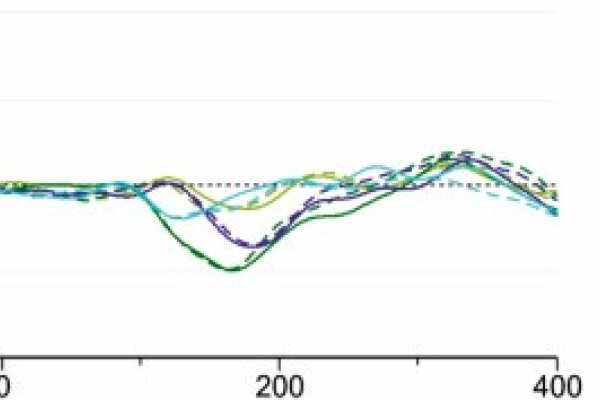2021-10-30

One could think that, since we have two separate hemispheres, each hemisphere works independently of the other. To a certain extent, this is true: Functional hemispheric asymmetries emerge as the left and the right hemisphere are dominant for different aspects of task processing. However, the hemispheres constantly share information through the corpus callosum, the white matter connecting between them
One could think that, since we have two separate hemispheres, each hemisphere works independently of the other. To a certain extent, this is true: Functional hemispheric asymmetries emerge as the left and the right hemisphere are dominant for different aspects of task processing. However, the hemispheres constantly share information through the corpus callosum, the white matter connecting between them. The integration of information across the corpus callosum is dependent on its structural integrity and functionality. Several hormones, like estradiol and progesterone, can influence this function. Since earlier work has demonstrated that long-term changes in stress hormone levels are accompanied by changes in hemispheric asymmetries in several mental disorders, the aim of the current study was to investigate whether acute stress and the associated changes in stress hormone levels also affect information transfer across the corpus callosum. For this purpose, researchers from the biopsychology and the cognitive psychology of the Ruhr University Bochum collected EEG data from 51 participants while completing a lexical decision task and a Poffenberger paradigm twice, once after stress induction with the Trier Social Stress Test and once after a control-condition. While there were no differences in interhemispheric transfer between the stress and the non-stress condition in the Poffenberger paradigm, we observed shorter latencies to stimuli in the left visual field in the left hemisphere at the CP3-CP4 electrode pair after stress. These electrodes are positioned over the brain area that is involved in lexical processing. This suggest that the transfer of lexical material from the right to the left hemisphere was quicker under stress indicative of more efficient signal transfer across the corpus callosum between language related areas.
Berretz, G., Packheiser, J., Wolf, O. T., & Ocklenburg, S. (2021). Improved interhemispheric connectivity after stress during lexical decision making. Behavioural Brain Research, 113648. https://doi.org/10.1016/j.bbr.2021.113648

One could think that, since we have two separate hemispheres, each hemisphere works independently of the other. To a certain extent, this is true: Functional hemispheric asymmetries emerge as the left and the right hemisphere are dominant for different aspects of task processing. However, the hemispheres constantly share information through the corpus callosum, the white matter connecting between them
One could think that, since we have two separate hemispheres, each hemisphere works independently of the other. To a certain extent, this is true: Functional hemispheric asymmetries emerge as the left and the right hemisphere are dominant for different aspects of task processing. However, the hemispheres constantly share information through the corpus callosum, the white matter connecting between them. The integration of information across the corpus callosum is dependent on its structural integrity and functionality. Several hormones, like estradiol and progesterone, can influence this function. Since earlier work has demonstrated that long-term changes in stress hormone levels are accompanied by changes in hemispheric asymmetries in several mental disorders, the aim of the current study was to investigate whether acute stress and the associated changes in stress hormone levels also affect information transfer across the corpus callosum. For this purpose, researchers from the biopsychology and the cognitive psychology of the Ruhr University Bochum collected EEG data from 51 participants while completing a lexical decision task and a Poffenberger paradigm twice, once after stress induction with the Trier Social Stress Test and once after a control-condition. While there were no differences in interhemispheric transfer between the stress and the non-stress condition in the Poffenberger paradigm, we observed shorter latencies to stimuli in the left visual field in the left hemisphere at the CP3-CP4 electrode pair after stress. These electrodes are positioned over the brain area that is involved in lexical processing. This suggest that the transfer of lexical material from the right to the left hemisphere was quicker under stress indicative of more efficient signal transfer across the corpus callosum between language related areas.
Berretz, G., Packheiser, J., Wolf, O. T., & Ocklenburg, S. (2021). Improved interhemispheric connectivity after stress during lexical decision making. Behavioural Brain Research, 113648. https://doi.org/10.1016/j.bbr.2021.113648